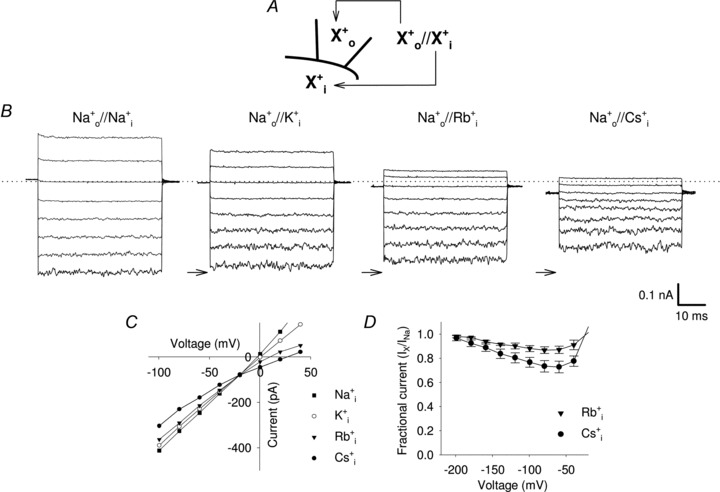Figure 2. Voltage-dependent blockage of Na+ current by intracellular Rb+ and Cs+ ions in WT CNGA1 channels.

A, scheme illustrating the nomenclature used for designating intracellular ( ) and extracellular (
) and extracellular ( ) solutions. X+ is the indicated monovalent cation. B, representative WT CNGA1 current recordings from one excised-patch in Na+ symmetrical conditions (110 mm
) solutions. X+ is the indicated monovalent cation. B, representative WT CNGA1 current recordings from one excised-patch in Na+ symmetrical conditions (110 mm
 /110 mm
/110 mm
 ) and when intracellular Na+ was replaced by an equimolar amount of K+, Rb+ and Cs+, respectively (110 mm
) and when intracellular Na+ was replaced by an equimolar amount of K+, Rb+ and Cs+, respectively (110 mm
 /110 mm
/110 mm
 , 110 mm
, 110 mm
 /110 mm
/110 mm
 and 110 mm
and 110 mm
 /110 mm
/110 mm
 ). Currents were elicited in the presence of 1 mm cGMP in the bathing medium and voltage steps ranging from −100 to 40 mV (ΔV = 20 mV). Dashed line indicates 0 current level; arrows indicate the −100 mV Na+ current level in symmetrical solution. C, I–V curves in WT CNGA1 channels in the presence of 110 mm intracellular Na+ (filled squares), K+ (open circles), Rb+ (filled triangles) and Cs+ (filled circles). D, dependency of residual fractional Na+ current IX/INa on voltage when Rb+ (filled triangles; n = 5) and Cs+ ions (filled circles; n = 6) are in the bathing medium.
). Currents were elicited in the presence of 1 mm cGMP in the bathing medium and voltage steps ranging from −100 to 40 mV (ΔV = 20 mV). Dashed line indicates 0 current level; arrows indicate the −100 mV Na+ current level in symmetrical solution. C, I–V curves in WT CNGA1 channels in the presence of 110 mm intracellular Na+ (filled squares), K+ (open circles), Rb+ (filled triangles) and Cs+ (filled circles). D, dependency of residual fractional Na+ current IX/INa on voltage when Rb+ (filled triangles; n = 5) and Cs+ ions (filled circles; n = 6) are in the bathing medium.
